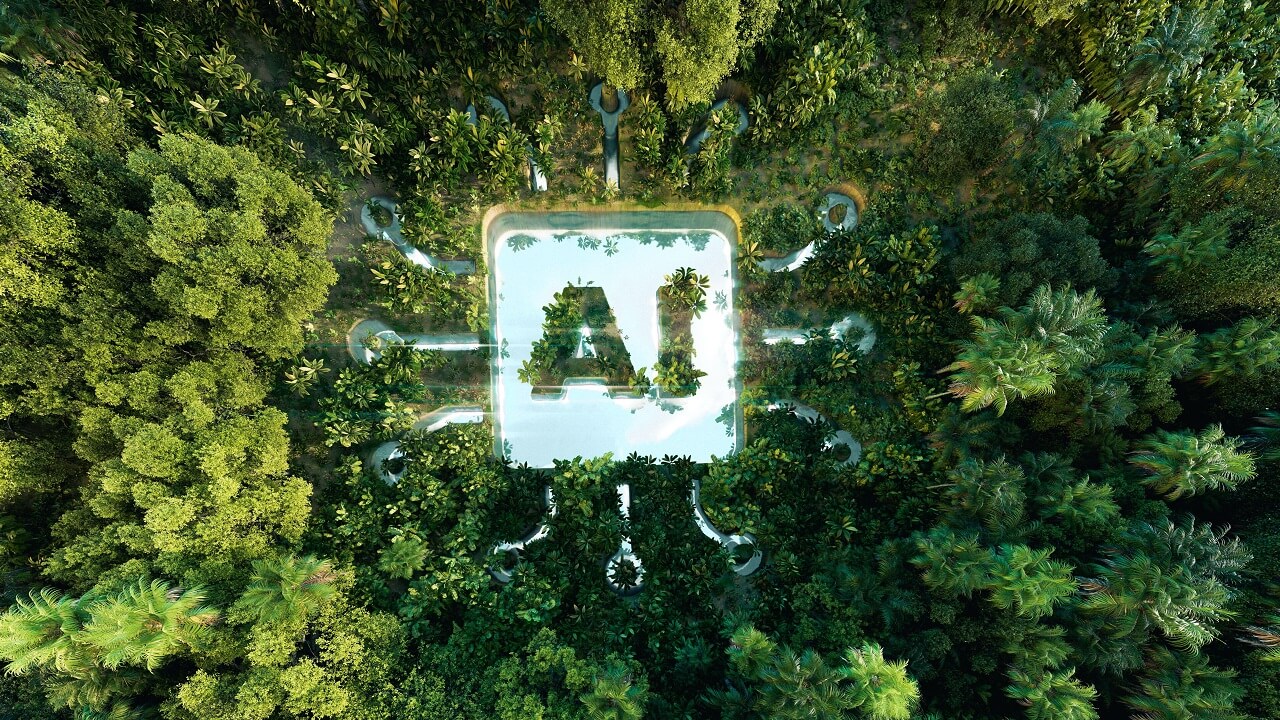AI Ethics – Part I: Guiding Principles for Enterprise

The world has now caught up to what was previously science fiction. We are now
designing AI that is in some ways far more advanced than anything Isaac Asimov
could have imagined, while at the same time being far more limited. Even though
they were originally conceived as fictional principles, there have been efforts
to adapt and enhance Isaac Asimov’s Three Laws of Robotics to fit modern
enterprise AI-based solutions. Here are some notable examples: Human-Centric AI
Principles - Modern AI ethics frameworks often emphasize human safety and
well-being, echoing Asimov’s First Law. ... Ethical AI Guidelines - Enterprises
are increasingly developing ethical guidelines for AI that align with Asimov’s
Second Law. These guidelines ensure that AI systems obey human instructions
while prioritizing ethical considerations. ... Bias Mitigation and Fairness
- In line with Asimov’s Third Law, there is a strong focus on protecting the
integrity of AI systems. This includes efforts to mitigate biases and ensure
fairness in AI outputs. ... Enhanced Ethical Frameworks - Some modern
adaptations include additional principles, such as the “Zeroth Law,” which
prioritizes humanity’s overall well-being.
Power of Neurodiversity: Why Software Needs a Revolution

Neurodiversity, which includes ADHD, autism spectrum disorder, and dyslexia,
presents unique challenges for individuals, yet it also comes with many unique
strengths. People on the autism spectrum often excel in logical thinking, while
individuals with ADHD can demonstrate exceptional attention to detail when
engaged in areas of interest. Those with dyslexia frequently display creative
thinking skills. However, software design often fails to accommodate
neurodiverse users. For example, websites or apps with cluttered interfaces can
overwhelm users with ADHD, while those sites that rely heavily on text make it
harder for individuals with dyslexia to process information. Additionally,
certain sounds or colors, such as bright colors, may be overwhelming for someone
with autism. Users do not have to adapt to poorly designed software. Instead,
software designers must create products designed to meet these user needs.
Waiting to receive software accessibility training on the job may be too late,
as software designers and developers will need to relearn foundational skills.
Moreover, accessibility still does not seem to be a priority in the workplace,
with most job postings for relevant positions not requiring these skills.
Protect Your Codebase: The Importance of Provenance

When you know that provenance is a vector for a software supply chain attack,
you can take action to protect it. The first step is to collect the provenance
data for your dependencies, where it exists; projects that meet SLSA level 1 or
higher produce provenance data you can inspect and verify. Ensure that trusted
identities generate provenance. If you can prove that provenance data came from
a system you own and secured or from a known good actor, it’s easier to trust.
Cryptographic signing of provenance records provides assurance that the record
was produced by a verifiable entity — either a person or a system with the
appropriate cryptographic key. Store provenance data in a write-once repository.
This allows you to verify later if any provenance data was modified.
Modification, whether malicious or accidental, is a warning sign that your
dependencies have been tampered with somehow. It’s also important to protect the
provenance you produce for yourself and any downstream users. Implement strict
access and authentication controls to ensure only authorized users can modify
provenance records.
Are You Technical or Non-Technical? Time to Reframe the Discussion
The term “technical” can introduce bias into hiring and career development,
potentially leading to decisions swayed more by perception than by a candidate’s
qualifications. Here, hiring decisions can sometimes reflect personal biases if
candidates do not fit a stereotypical image or lack certain qualifications not
essential for the role. For instance, a candidate might be viewed as not
technical enough if they lack server administration experience, even when the
job primarily involves software development. Unconscious bias can skew
evaluations, leading to decisions based more on perceptions than actual skills.
To address this issue, it is important to clearly define the skills required for
a position. For example, rather than broadly labeling a candidate as “not
technical enough,” it is more effective to specify areas for improvement, such
as “needs advanced database management skills.” This approach not only
highlights areas where candidates excel, such as developing user-centric
reports, but also clarifies specific shortcomings. Clearly stating requirements,
such as “requires experience building scalable applications with technology Y,”
enhances the transparency and objectivity of the hiring process.
Will Future AI Demands Derail Sustainable Energy Initiatives?

The single biggest thing enterprises are doing to address energy concerns is
moving toward more energy efficient second-generation chips, says Duncan
Stewart, a research director with advisory firm Deloitte Technology, via email.
"These chips are a bit faster at accelerating training and inference -- about
25% better than first-gen chips -- and their efficiency is almost triple that of
first-generation chips." He adds that almost every chipmaker is now targeting
efficiency as the most important chip feature In the meantime, developers will
continue to play a key role in optimizing AI energy needs, as well as validating
whether AI is even required to achieve a particular outcome. "For example, do we
need to use a large language model that requires lots of computing power to
generate an answer from enormous data sets, or can we use more narrow and
applied techniques, like predictive models that require much less computing
because they’ve been trained on much more specific and relevant data sets?"
Warburton asks. "Can we utilize compute instances that are powered by low-carbon
electricity sources?
When your cloud strategy is ‘it depends’

As for their use of private cloud, some of the rationale is purely a cost
calculation. For some workloads, it’s cheaper to run on premises. “The cloud is
not cheaper. That’s a myth,” one of the IT execs told me, while acknowledging
cost wasn’t their primary reason for embracing cloud anyway. I’ve been noting
this for well over a decade. Convenience, not cost, tends to drive cloud
spend—and leads to a great deal of cloud sprawl, as Osterman Research has
found. ... You want developers, architects, and others to feel confident
with new technology. You want to turn them into allies, not holdouts. Jassy
declared, “Most of the big initial challenges of transforming the cloud are not
technical” but rather “about leadership—executive leadership.” That’s only half
true. It’s true that developers thrive when they have executive air cover. This
support makes it easier for them to embrace a future they likely already want.
But they also need that executive support to include time and resources to learn
the technologies and techniques necessary for executing that new direction. If
you want your company to embrace new directions faster, whether cloud or AI or
whatever it may be, make it safe for them to learn.
4 steps to shift from outputs to outcomes

Shifting the focus to outcomes — business results aligned with strategic goals —
was the key to unlocking value. David had to teach his teams to see the bigger
picture of their business impact. By doing this, every project became a lever to
achieve revenue growth, cost savings, and customer satisfaction, rather than
just another task list. Simply being busy doesn’t mean a project is successful
in delivering business value, yet many teams proudly wear busy badges, leaving
executives wondering why results aren’t materializing. Busy doesn’t equal
productive. In fact, busy gets in the way of being productive. ... A common
issue is project teams lose sight of how their work aligns with the company’s
broader goals. When David took over, his teams were still disconnected from
those strategic objectives, but by revisiting them and ensuring that every
project directly supported those goals, the teams could finally see they were
part of something much larger than just a list of tasks. Many business leaders
think their teams are mind readers. They hold a town hall, send out a slide
deck, and then expect everyone to get it. But months later, they’re surprised
when the strategy starts slipping through their fingers.
Is Your Business Ready For The Inevitable Cyberattack?
Cybersecurity threats are inevitable, making it essential for businesses to
prepare for the worst. The critical question is: if your business is hacked, is
your data protected, and can you recover it in hours rather than days or weeks?
If not, you are leaving your business vulnerable to severe disruptions. While
everyone emphasises the importance of backups, the real challenge lies in
ensuring their integrity and recoverability. Are your backups clean? Can you
quickly restore data without prolonged downtime? The total cost of ownership
(TCO) of your data protection strategy over time is a crucial consideration.
Traditional methods, such as relying on Iron Mountain for physical backups, are
cumbersome and time-bound, requiring significant effort to locate and restore
data. ... The story of data storage, much like the shift to cloud computing,
revolves around strategically placing the right parts of your business
operations in the most suitable locations at the right times. Data protection
follows the same principle. Resilience is still a topic of frequent discussion,
yet its broad nature makes it challenging to establish a clear set of best
practices.
Digital twin in the hospitality industry-Innovations in planning & designing a hotel

The Metaverse is revolutionising how it became a factual virtual reality tour of
rooms and services experienced by guests during their visit, for which the guest
is provided the chance to preview before booking. Moreover, hotels can provide
tailored virtual experiences through interactive concierge services and bespoke
room décor options. More events will be held through immersive games and
entertaining interactivity, bringing better visitor experiences to the
hospitality industry. It can generate revenue through tickets, sponsorships, and
virtual item sales. ... Operational efficiency is the bottom line of
hospitality, where everything seems small but matters so much for guest
satisfaction. Imagine the case where the HVAC system of a hotel or its lighting
is controlled by some model of a digital twin. Managers will thus understand the
energy consumption patterns and predict what will require maintenance so they
can change those settings accordingly based on real-time data. Digital twins
enable staff and resources to be trained better. Staff can be comfortable with
changes in procedures and layout beforehand by interacting with the virtual
model.
The cybersecurity paradigm shift: AI is necessitating the need to fight fire with fire
/dq/media/media_files/KhXRkhRATvhED3nupbpC.jpg)
Organisations should be prepared for the worst-case scenario of a cyber-attack
to establish cyber resilience. This involves being able to protect and secure
data, detect cyber threats and attacks, and respond with automated data
recovery processes. Each element is critical to ensuring an organization can
maintain operational integrity under attack. ... However, the reality is that
many organisations are unable to keep up. From the company's recent survey
released in late January 2024, 79% of IT and security decision-makers said
they did not have full confidence in their company’s cyber resilience
strategy. Just 12% said their data security, management, and recovery
capabilities had been stress tested in the six months prior to being surveyed.
... To bolster cyber resilience, companies must integrate a robust combination
of people, processes, and technology. Fostering a skilled workforce equipped
to detect and respond to threats effectively starts with having employee
education and training in place to keep pace with the rising sophistication of
AI-driven phishing attacks.
Quote for the day:
"If you want to achieve excellence,
you can get there today. As of this second, quit doing less-than-excellent
work." -- Thomas J. Watson
No comments:
Post a Comment